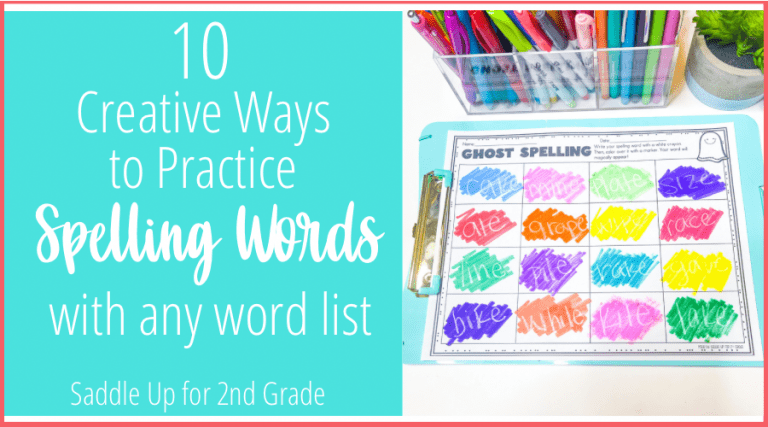

Join me for a FREE, Guided Math workshop to discover how to easily incorporate Guided Math into your current schedule!
Hey there! Today I’m going to to be talking all about setting up a writer’s notebook for your young writers. This is something you could easily implement at the beginning of the year or anytime throughout the school year. I’ve been using this particular system in my classroom for a few years now and really like how it keeps all of my student’s writing organized. Keep reading to find out my useful tips for helping your students set up their own writer’s notebook.
Each student will need a three ring binder to use as their own writer’s notebook. The best kind of notebook to use is a 1 1/2 inch binder. I realize that binders can get expensive. I’ve worked in a district where we were lucky to have them on our school supply list and then I’ve also worked in a district where I had to purchase them myself. If you are purchasing these yourself, here are some places I’ve found to be the least expensive.
The first thing you need to do is set up the sections of the writer’s notebook. Each writer’s notebook is divided into 8 sections. You can get them for FREE in my TPT store by clicking here. I run off a class set of each section onto Astrobrights colored paper. The bright colors are a great way for students to easily distinguish each section when it is needed so it saves time from flipping through all the pages. You can also add a front cover for each student to easily identify their book.
The first page in the writer’s notebook is our Spelling Dictionary. Each Monday when new spelling words are introduced, they add them to their dictionaries to reference throughout the year. Their copy of their spelling list goes in the pocket of their notebook. I use these spelling lists.
Then you will find our Vocabulary Journals. We write in these as we are learning about new vocabulary words each week. We do not complete ALL sections for each word in one day. Here is an example.
Once my students become familiar with this process they can do this independently in a word work station. You can get these journals here.
The next four sections in the writer’s notebook are for the writing process and keeping track of the creative process of writing. This is the largest section of the notebook. Students can keep their writing behind each stage of the process that they are on at that time.
All pre-writing pages where they collect information and ideas are always kept behind this section so it never ends up sucked up into the vortex of lost papers (most of the time).
All rough draft copies are kept in this dedicated space. I don’t always use pre-made sheets. Lined notebook paper works just fine.
Once their rough draft is complete, they place it behind the editing and revising section. This makes it easy to find when we have writing conferences.
The steps we use to edit our writing shared on the anchor chart. They use the same colors for each step when editing. This powerful tool will help keep everyone organized as they edit their work and it makes it easier for you to track the changes they make to their writing.
When it comes to independent writing time I want students to have a choice. In this section, they keep their monthly writing calendars. They are allowed to pick any topic from the calendar. Once they’ve written about that topic, they color in the picture to show they’ve already done that particular one. Allowing students to select what they want to write about will make a big difference!
I love these calendars because they match the real photo task cards that are kept in our writing center. You can get the calendars and matching cards here.
Every writing piece they do during work on writing goes in this section. I don’t use any kind of fancy paper for this. Last year, I ran off sheets for lists, stories, letters, etc and it was a lot to keep up with. The best way to keep track of writing paper is to keep blank pages r at your writing station. Students can grab a sheet of paper each day and get to work.
I love this set up because I can quickly grab their writer’s notebooks to check their work. Then at the end of each year, all of their wonderful writing will be in one place. I love looking back to see how much their writing has grown. Allowing students to layout their writing processes in their own notebook will help develop lifelong writers.
Math should be fun, not stressful. Ditch the timed math fact tests and replace them with math games that will help your students learn and retain information more effectively.
© Saddle Up for 2nd Grade • Website by KristenDoyle.co